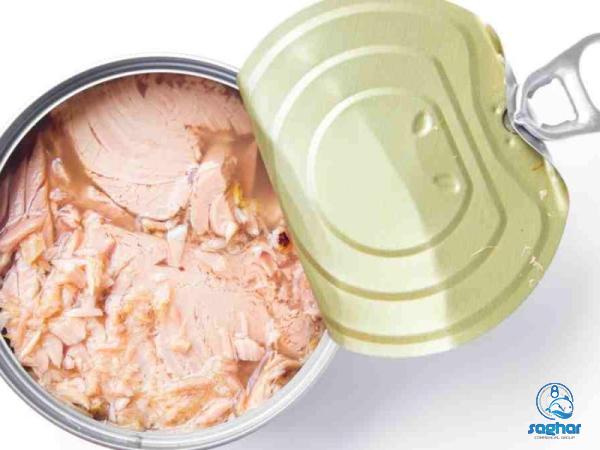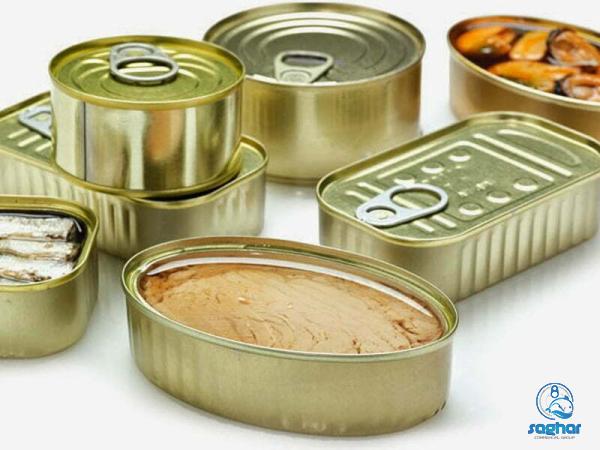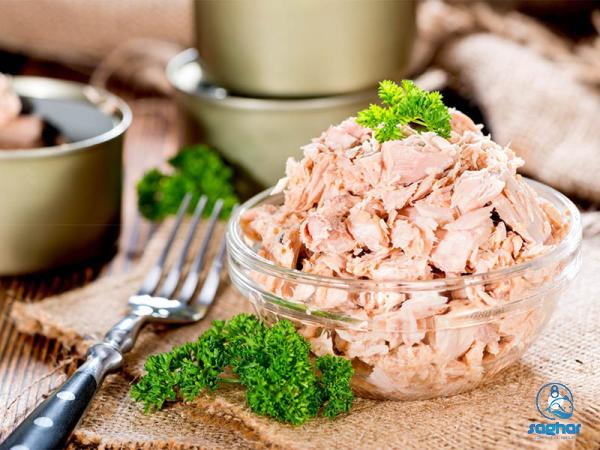Title: The Price of Tuna Canned Food and Wholesale Production Distribution Introduction: Tuna is a popular seafood choice globally, with canned tuna being a convenient and widespread way to enjoy its taste and nutritional benefits. This article delves into the factors that influence the pricing of tuna canned food and explores the wholesale production and distribution of tuna factories. 1. Factors Influencing Tuna Canned Food Pricing: a. Tuna Fishery: The price of tuna canned food is significantly influenced by the availability and quality of tuna fish in the market. Factors such as catch volume, species availability, fishing methods, and regulations play a vital role in determining the price point.
canned food
 b. Processing Costs: Canning tuna involves several steps, including cleaning, cooking, canning, labeling, and packaging. The expenses incurred during these processes, such as labor costs, equipment maintenance, and ingredients, impact the final product price. c. Packaging and Branding: The type of packaging, branding, and marketing efforts put into promoting tuna canned products can also affect their pricing. Premium brands with attractive packaging and strong brand recognition usually command higher prices in the market.
b. Processing Costs: Canning tuna involves several steps, including cleaning, cooking, canning, labeling, and packaging. The expenses incurred during these processes, such as labor costs, equipment maintenance, and ingredients, impact the final product price. c. Packaging and Branding: The type of packaging, branding, and marketing efforts put into promoting tuna canned products can also affect their pricing. Premium brands with attractive packaging and strong brand recognition usually command higher prices in the market.
Specifications of canned food
 d. Supply Chain: The cost of transporting and storing tuna canned products throughout the supply chain, which includes refrigerated storage and distribution facilities, transportation costs, and handling fees, can influence the price of the final product. 2. Wholesale Production and Distribution of Tuna Factories: a. Tuna Fisheries: Tuna factories typically establish partnerships and contracts with seafood suppliers, including individual fishermen, fishing fleets, and fishery cooperatives. These partnerships ensure a consistent supply of fresh tuna for production. b. Quality Control: Tuna factories implement rigorous quality control measures to ensure that only the highest quality tuna is used for canning. This includes extensive testing for mercury levels, freshness, texture, color, and flavor.
d. Supply Chain: The cost of transporting and storing tuna canned products throughout the supply chain, which includes refrigerated storage and distribution facilities, transportation costs, and handling fees, can influence the price of the final product. 2. Wholesale Production and Distribution of Tuna Factories: a. Tuna Fisheries: Tuna factories typically establish partnerships and contracts with seafood suppliers, including individual fishermen, fishing fleets, and fishery cooperatives. These partnerships ensure a consistent supply of fresh tuna for production. b. Quality Control: Tuna factories implement rigorous quality control measures to ensure that only the highest quality tuna is used for canning. This includes extensive testing for mercury levels, freshness, texture, color, and flavor.
buy canned food
 c. Processing Facilities: Tuna factories are equipped with advanced processing facilities, including cleaning machines, cooking vats, canning lines, labeling machines, and packaging systems. These facilities are designed to streamline the production process and maintain product quality and hygiene standards. d. Distribution Networks: Tuna factories have established distribution networks to ensure that their products reach buyers efficiently. These networks include partnerships with wholesale distributors, grocery store chains, supermarkets, and online retailers, enabling the tuna canned food to be widely available to consumers. e. Bulk Packaging: Tuna factories offer wholesale options for buyers, usually in the form of bulk packaging. This allows retailers, restaurants, and catering businesses to purchase canned tuna in larger quantities at lower prices, ensuring a steady supply for their customers.
c. Processing Facilities: Tuna factories are equipped with advanced processing facilities, including cleaning machines, cooking vats, canning lines, labeling machines, and packaging systems. These facilities are designed to streamline the production process and maintain product quality and hygiene standards. d. Distribution Networks: Tuna factories have established distribution networks to ensure that their products reach buyers efficiently. These networks include partnerships with wholesale distributors, grocery store chains, supermarkets, and online retailers, enabling the tuna canned food to be widely available to consumers. e. Bulk Packaging: Tuna factories offer wholesale options for buyers, usually in the form of bulk packaging. This allows retailers, restaurants, and catering businesses to purchase canned tuna in larger quantities at lower prices, ensuring a steady supply for their customers.
canned food + buy and sell
 3. Market Trends and Challenges: a. Sustainability Concerns: With growing concerns about overfishing and marine ecosystem conservation, consumers are increasingly seeking sustainable seafood options. Tuna factories are addressing these concerns by implementing sustainable fishing practices and obtaining certifications from organizations like the Marine Stewardship Council (MSC). b. Consumer Preferences: Tuna factories are catering to changing consumer preferences by diversifying their product offerings. This includes introducing flavored and value-added tuna products, such as those packed in olive oil or with added herbs and spices. c. Price Competition: The canned tuna market is highly competitive, which often leads to price fluctuations. Tuna factories must navigate this competition while maintaining product quality and ensuring cost-effective production. d. Global Trade Dynamics: Global trade policies and economic factors can impact the price of tuna canned food. Tariffs, import/export regulations, and currency exchange rates can affect the cost of raw materials and transportation, subsequently influencing the final price of the product. Conclusion: The pricing of tuna canned food is influenced by various factors, including tuna fishery conditions, processing costs, packaging and branding efforts, and supply chain logistics. Tuna factories play a crucial role in ensuring a steady supply of high-quality canned tuna through partnerships with fishermen, implementing strict quality control measures, and establishing extensive distribution networks. However, they also face challenges such as sustainability concerns, evolving consumer preferences, price competition, and global trade dynamics. By understanding these factors and adapting to market trends, tuna factories can continue to provide affordable and sustainable tuna canned food options for consumers worldwide.
3. Market Trends and Challenges: a. Sustainability Concerns: With growing concerns about overfishing and marine ecosystem conservation, consumers are increasingly seeking sustainable seafood options. Tuna factories are addressing these concerns by implementing sustainable fishing practices and obtaining certifications from organizations like the Marine Stewardship Council (MSC). b. Consumer Preferences: Tuna factories are catering to changing consumer preferences by diversifying their product offerings. This includes introducing flavored and value-added tuna products, such as those packed in olive oil or with added herbs and spices. c. Price Competition: The canned tuna market is highly competitive, which often leads to price fluctuations. Tuna factories must navigate this competition while maintaining product quality and ensuring cost-effective production. d. Global Trade Dynamics: Global trade policies and economic factors can impact the price of tuna canned food. Tariffs, import/export regulations, and currency exchange rates can affect the cost of raw materials and transportation, subsequently influencing the final price of the product. Conclusion: The pricing of tuna canned food is influenced by various factors, including tuna fishery conditions, processing costs, packaging and branding efforts, and supply chain logistics. Tuna factories play a crucial role in ensuring a steady supply of high-quality canned tuna through partnerships with fishermen, implementing strict quality control measures, and establishing extensive distribution networks. However, they also face challenges such as sustainability concerns, evolving consumer preferences, price competition, and global trade dynamics. By understanding these factors and adapting to market trends, tuna factories can continue to provide affordable and sustainable tuna canned food options for consumers worldwide.

Your comment submitted.